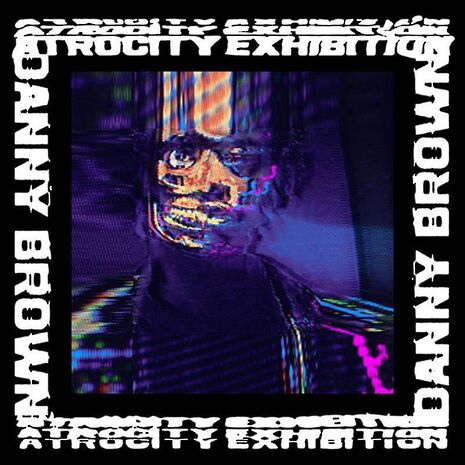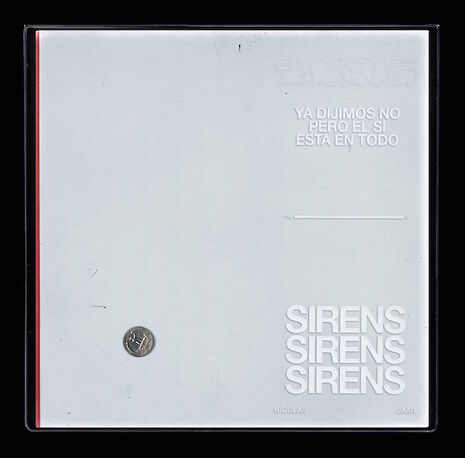Reviews of the week
Our top albums for the week ahead

Danny Brown – Atrocity Exhibition
By Miikka Jaarte
4 Stars
Danny Brown is one of the most distinctive voices in contemporary hip hop. The 35-year-old Detroit rapper is also one of the few modern rappers to have earned true crossover appeal. On the one hand, his high-pitched yelping flow, experimental beats and highly personal lyricism draws hardcore hip hop fans. On the other hand, his countless, immediately catchy club bangers have ensured Brown airtime in clubs, festivals and on radio. Brown’s third project, Atrocity Exhibition, is a return to his experimental roots and beyond. Atrocity Exhibition is of his before – it channels post-punk, psychedelia and abrasive noisy hip hop to make the strangest and most boundary-pushing hip hop album of the year.
Atrocity Exhibition gets its name from a Joy Division song, and the influence of 80s post-punk is present throughout. A feeling of impending doom, like the one that’s found in the darkest moments of Bauhaus or Killing Joke, accompanies the whole project. The album chronicles Brown’s drug addiction’s (few) highs and (many) hangovers set to incredibly experimental and dark beats. The lyricism shifts from the party anthems of Brown’s last album Old, toward the truly disturbing description of a downward spiral of drug addiction. The flight from the consequences of Brown’s lifestyle feels like watching a car crash in unforgiving slow motion.
Nicolas Jaar – Sirens

By Christian Harvey
3.5 Stars
Minimalism is growing up. In the first moments of Nicolas Jaar’s latest contribution, you could be forgiven for thinking not too much has changed since his latest collaboration (DARKSIDE’s excellent Psychic). But after the opening, ‘Killing Time’, which is perhaps a little too perfectly observed, Jaar launches into a series of impressions of various genres that veer between trite and revolutionary. Take ‘No’, a track that perfectly fuses both sides of Jaar’s American and Chilean heritage. It’s a perfect synthesis: the juddering glitches of maracas and sharp, stabbing synths are perfectly held against a pulsing bass line and a vocal that seems, at once, both distant and remote. It’s a track that could only exist in our epoch; a track that’s at the junction of an analogue past and a digital future. ‘The Governor’ and ‘Leaves’ complete the first two thirds of this admittedly short album. At 42 minutes and only six tracks, it feels insubstantial. True, Space Is Only Noise (Jaar’s blistering debut that did more with one clap sample than most artists could manage with an orchestra) was only four minutes longer, but that album also had 14 tracks to play with. Even Psychic, his collaboration with Dave Harrington was 45 minutes and eight tracks. His brevity lends an urgency to the last third of the album: the beating toms of ‘Three Sides of Nazareth’ blend in and out of an oscillating, whining synth as the track progresses, mirroring how the whole track fluctuates between silence and anger. It reminds me of Further by The Chemical Brothers, if they were starting to feel the walls close in on a bad acid trip. Unfortunately, this excellent track overhypes the denouement to come; a trite (though brilliantly observed) piece of Americana, aptly titled ‘History Lesson’. Perhaps I missed the point of it, but it feels either too long or too short – an apt description of the album as a whole. In the final analysis, this album is technically competent; but it cannot sustain its streaks of brilliance. For those moments, though, it is well worth a listen, and it may provide an easy entry point for those new to experimental electronic music.
 News / Caius mourns its tree-mendous loss23 December 2025
News / Caius mourns its tree-mendous loss23 December 2025 Comment / Yes, I’m brown – but I have more important things to say22 December 2025
Comment / Yes, I’m brown – but I have more important things to say22 December 2025 Interviews / Politics, your own way: Tilly Middlehurst on speaking out21 December 2025
Interviews / Politics, your own way: Tilly Middlehurst on speaking out21 December 2025 News / King appoints Peterhouse chaplain to Westminster Abbey22 December 2025
News / King appoints Peterhouse chaplain to Westminster Abbey22 December 2025 News / Clare Hall spent over £500k opposing busway 24 December 2025
News / Clare Hall spent over £500k opposing busway 24 December 2025








